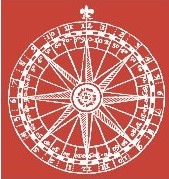Alfonso de Madrigal and Juan de Segovia: Some Conciliar Common (and Contested) Places
This article offers a preliminary comparison of the thoughts of Alfonso de Madrigal and Juan de Segovia, two important fifteenth-century Spanish academics and authors whom scholars have seen as ideological allies. It identifies several areas of…
Listed in Article | publication by group Iter Community
Version 1.0 - published on 17 Oct 2025
Licensed under Creative Commons BY-NC 4.0
Description
This article offers a preliminary comparison of the thoughts of Alfonso de Madrigal and Juan de Segovia, two important fifteenth-century Spanish academics and authors whom scholars have seen as ideological allies. It identifies several areas of interest common to both writers, and then focuses on their conciliarist views. It argues that while Madrigal and Segovia both asserted several conciliar “common places,” often in similar terms, their ecclesiological positions differed in significant ways. Madrigal’s “theoretical” conciliarism is contrasted with Segovia’s “engaged” conciliarism in order to illuminate the notable differences in their respective careers and influence. The article concludes with a call for closer comparative study of these two wide-ranging thinkers.
Cite this work
Researchers should cite this work as follows:
Tags
Notes
Original publication: Mann, Jesse D. "Alfonso de Madrigal and Juan de Segovia: Some Conciliar Common (and Contested) Places." Renaissance and Reformation 42 (3): 2019. 45-72. DOI: 10.7202/1066359ar. This material has been re-published in an unmodified form on the Canadian HSS Commons with the permission of Iter Canada / Renaissance and Reformation. Copyright © the author(s). Their work is distributed by Renaissance and Reformation under a Creative Commons Attribution-NonCommercial 4.0 International License. For details, see https://creativecommons.org/licenses/.
Publication preview
Iter Community
This publication belongs to the Iter Community group.
When watching a publication, you will be notified when a new version is released.
